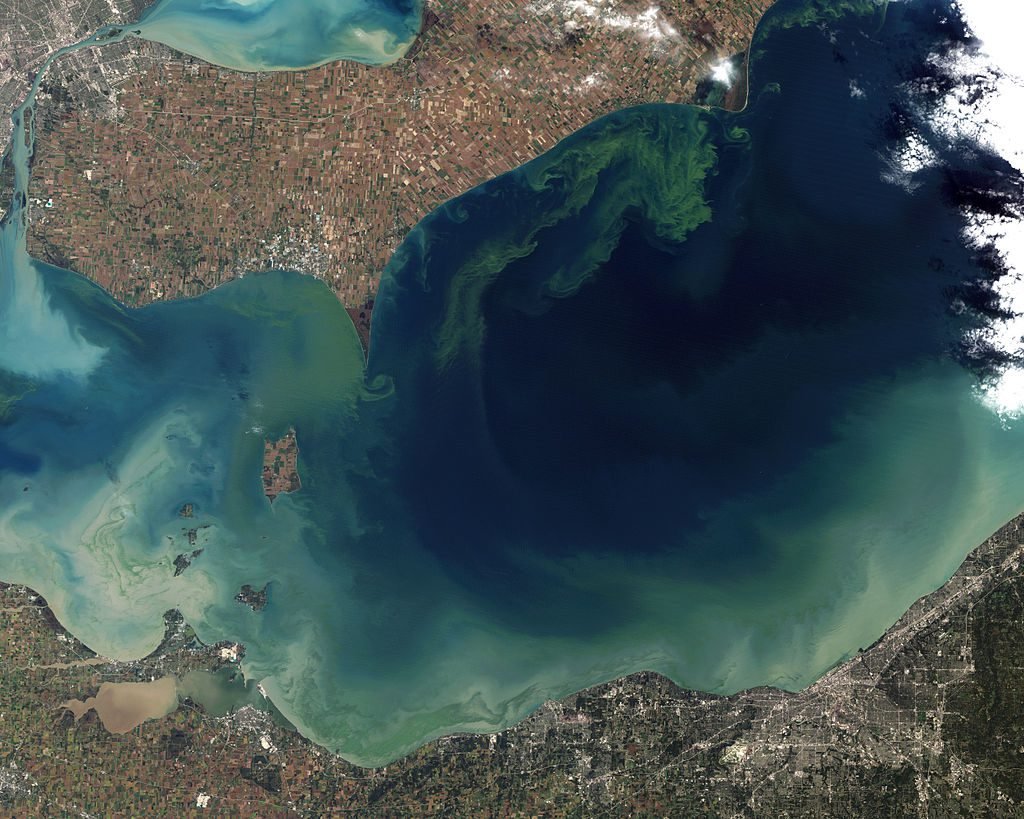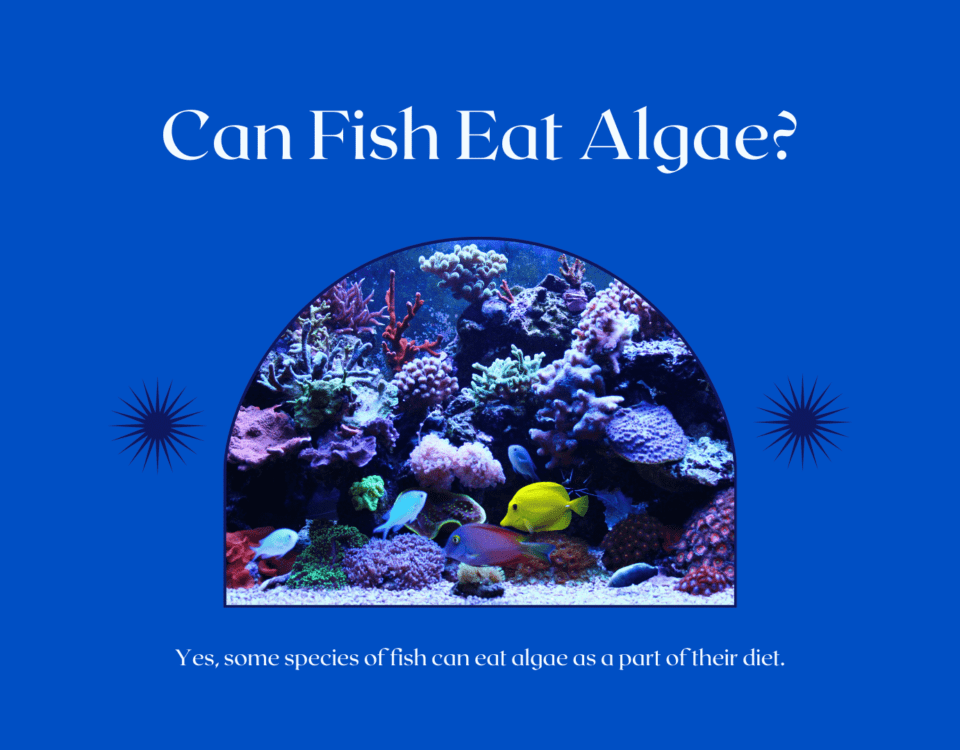


Can Koi Fish Live In A Tank? How Many Can Live Together?
February 25, 2024


9 Fish That Play Dead (& Facts You Should Know)
February 25, 2024Imagine a world where water is as vast as the sky and creatures glide as if flying. In this aquatic realm, where breathing is not a matter of inhaling air but sifting oxygen through water, drowning seems almost contradictory.
Yet, the question arises: Can a fish drown? At first glance, the idea may seem as absurd as a bird forgetting how to fly. However, exploring the complexities of fish physiology and the environmental factors affecting their survival unveils a fascinating topic that challenges our understanding of life beneath the waves. But here’s a quick answer:
Yes, fish can “drown” when they cannot extract oxygen from water, such as in water with deficient oxygen levels or polluted or wrong salinity conditions, which impair their gill function, leading to a lack of oxygen essential for survival.
This exploration into whether fish can indeed drown opens a window into the delicate balance of aquatic ecosystems and the extraordinary adaptations of their inhabitants.
Understanding How Fish Breathe
Let’s first understand how fish breathe:
Gills and Respiration
Fish breathe by extracting oxygen from water through their gills. Water enters the mouth, flows over the gill filaments, and exits alongside the covers. Oxygen in the water diffuses into the blood in the gills. In contrast, carbon dioxide diffuses out, a process facilitated by the gill filaments’ large surface area and thin membranes.
Swim Bladder and Buoyancy
The swim bladder is an internal gas-filled organ that allows fish to control their buoyancy. By adjusting the gas volume within the bladder, fish can ascend or descend in the water column without expending energy, enabling stable swimming and resting positions.
Labyrinth Organs and Surface Breathing
Labyrinth organs in some fish, like bettas and gouramis, enable oxygen intake directly from the air. This adaptation allows these fish to survive in oxygen-poor water by gulping air at the surface, supplementing the oxygen obtained through their gills.
Blood Vessels and Gas Exchange
Blood vessels in fish play a crucial role in gas exchange, transporting oxygen from the gills to the body’s cells and returning carbon dioxide to the gills for expulsion. This network ensures the efficient distribution of oxygen, which is essential for cellular respiration and energy production.
Differences from Mammalian Respiration
Unlike mammals, which inhale air into lungs where oxygen and carbon dioxide are exchanged, fish rely on water passing over their gills for this exchange. This method requires continuous water flow over the gill surfaces, contrasting with the intermittent breathing of mammals.
Also, Read: Are Fish Good Pets? 10 Things to Consider Before Getting One


How Do Fish Breathe
What Does Drowning Mean for Fish?
Drowning in humans occurs when the lungs fill with water, preventing air from being absorbed into the bloodstream and leading to a lack of oxygen.
For fish, “drowning” is not about water entering the lungs but about the inability to extract sufficient oxygen from the water through their gills. This can result from various factors, including water pollution, extreme temperatures, or low oxygen levels.
Oxygen Dissolution in Aquatic Environments
Dissolved oxygen refers to the oxygen content within the water, which is crucial for aquatic organisms’ survival. Fish rely on this dissolved oxygen, absorbing it through their gills for respiration. Insufficient levels can result in suffocation.
Influences on Dissolved Oxygen
The dissolved oxygen concentration can fluctuate based on temperature, salinity, and the water flow dynamics. These factors collectively influence the oxygen availability for aquatic life, impacting their survival.
Oxygen Requirements for Fish
The necessity for dissolved oxygen varies among fish, influenced by their species, size, and developmental stage. While some species can withstand low oxygen environments, others demand higher concentrations for optimal health.
A decline in oxygen levels below a critical threshold can cause stress and potentially lead to mortality if conditions do not improve.
The Phenomenon of Fish Suffocation
Fish suffer from an inability to procure adequate oxygen from their aquatic surroundings. This can be due to depleted dissolved oxygen levels or physical restrictions limiting access to well-oxygenated water.
Exposure to pollutants or harmful substances that disrupt respiratory efficiency can further exacerbate the risk of suffocation.
Must Read: Why Does My Fish Tank Lose Water? Causes & Solutions!
Conditions Under Which Fish Can “Drown”
Fish can “drown,” or more accurately, suffocate when they are unable to extract the necessary oxygen from the water. This condition can arise from several environmental and physiological factors that impede their gill function.
Low Oxygen Levels (Hypoxia)
Fish can suffocate in water with insufficient dissolved oxygen, known as hypoxia. This can occur in overcrowded environments or due to excessive algae growth.
Poor Water Quality
Pollutants, chemicals, or excessive waste in the water can impair gill function, preventing efficient oxygen extraction and leading to suffocation.
Overcrowding
Too many fish in a confined space can deplete available oxygen faster than it can be replenished, leading to lower oxygen levels that can cause suffocation.
Incorrect Salinity
Fish adapted to specific salinity levels can struggle to regulate their internal osmotic balance in water with incorrect salinity, affecting their ability to absorb oxygen and potentially leading to suffocation.
High Water Temperature
Elevated water temperatures can reduce the capacity of water to hold oxygen while simultaneously increasing fish metabolism and oxygen demand, leading to potential oxygen shortages.
Algae Blooming
Algal blooms can drastically affect oxygen levels in water bodies. During the day, algae produce oxygen, but at night, they consume oxygen, significantly reducing its availability for fish, which can lead to hypoxic conditions.


Algae Bloom in Lake
Recommended Read: Why can’t fish live in tap water? [2024 Guide]
Oxygen needs of fish in different water types
The oxygen needs of fish vary significantly across different types of water environments, such as freshwater, saltwater, and aquarium settings. Each environment has unique characteristics that influence the dissolved oxygen levels and, consequently, the oxygen requirements of its aquatic inhabitants.
Freshwater Fish
Freshwater fish typically inhabit rivers, lakes, and streams where the oxygen levels vary depending on temperature, flow rate, and plant life. These fish are adapted to a wide range of oxygen concentrations but generally require dissolved oxygen levels to be at least 5-6 mg/L to thrive.
Species in stagnant or slow-moving waters may be adapted to lower oxygen levels.
Saltwater Fish
Saltwater or marine fish live in oceans and seas where the salinity levels are higher, and the oxygen content can be lower than in freshwater. Marine fish often require dissolved oxygen levels between 5-7 mg/L.
The oxygen availability in saltwater is also influenced by temperature, depth, and salinity, with colder and shallower waters typically having higher oxygen levels.
Aquarium Fish
Whether fresh or saltwater, aquarium fish depend on carefully managed water conditions. Aquariums should maintain dissolved oxygen levels similar to the fish’s natural habitats, usually around 5-8 mg/L, to ensure their health and well-being.
Factors like water temperature, filtration, plant life, and stocking density must be managed to keep oxygen levels within an optimal range. Aeration devices, such as air stones or pumps, are commonly used in aquariums to increase oxygen saturation.
Brackish Water Fish
Brackishwater fish live in environments where fresh and saltwater mix, such as estuaries. These species are adapted to fluctuating salinity levels and typically require dissolved oxygen levels similar to freshwater and saltwater fish, around 5-7 mg/L.
The specific oxygen needs can vary depending on the species and the salinity of their particular habitat.
Editor’s Pick: Can Fish Survive in Bowls? Should You Keep One?
Preventing Fish “Drowning” in Aquariums and Fish Farms
Ensuring fish’s health and survival in aquariums and farms requires diligent water quality and oxygen management.
Preventing fish from “drowning” due to inadequate oxygen involves several critical practices to create a stable and suitable environment for aquatic life.
- Maintain Optimal Water Quality: Regularly change the water and use filtration systems to remove waste and keep the water clean. Avoid overfeeding, as uneaten food can decompose and deplete oxygen levels.
- Aerate the Water: Use air pumps, stones, or waterfalls to increase water movement and enhance oxygen absorption. Proper aeration is essential for maintaining high dissolved oxygen levels.
- Regular Water Testing: Regularly test water for pH, ammonia, nitrites, nitrates, and dissolved oxygen levels to ensure they remain within safe ranges for the fish species being kept.
- Appropriate Stocking Densities: Avoid overcrowding by adhering to proper stocking densities. Too many fish can quickly deplete oxygen levels and increase the amount of waste produced, leading to poor water quality.
- Understand Species-Specific Needs: Different fish species have varying requirements for temperature, pH, and oxygen levels. Research and provide conditions that mimic their natural habitats as closely as possible.
- Temperature Management: Keep the water at an optimal temperature for your specific fish species. Warmer water holds less oxygen, so cooling mechanisms may be necessary for some setups, especially in warmer climates.
- Plant Balance: While live plants produce oxygen during the day, they also consume oxygen at night. Ensure a balanced number of plants to support oxygen levels around the clock.


Fish Tank @ Aquarium
Can fish drown in water?
Yes, fish can “drown” if they cannot extract the necessary oxygen from the water due to poor water conditions, lack of dissolved oxygen, or improper salinity levels that impair their gill function.
What are the signs that a fish is not getting enough oxygen?
Signs include:
- Fish gasping at the surface.
- Less activity.
- Rapid gill movement.
- Staying near water inflow areas where oxygen levels might be higher.
How can I increase oxygen levels in my aquarium?
You can increase oxygen levels by introducing air pumps or air stones to promote water movement, maintain appropriate water temperature, reduce overcrowding, and ensure a clean tank with regular water changes.
Does the temperature of the water affect a fish’s oxygen needs?
Yes, warmer water holds less oxygen than cooler water. As temperature increases, fish’s metabolism and oxygen demand also increase, so managing water temperature is crucial to ensure adequate oxygen supply.
Can too many plants in an aquarium lead to fish drowning?
While plants produce oxygen during the day, they also consume oxygen at night. An excessive number of plants can deplete oxygen levels during the night, potentially stressing fish. Balancing plant life to maintain stable oxygen levels around the clock is crucial.
Read Next: Why Does My Fish Tank Smell? | How To Remove The Smell?
Conclusion
In exploring whether fish can drown, we’ve uncovered the intricacies of fish respiration, the critical role of dissolved oxygen, and the conditions that can lead to suffocation.
Understanding these aspects is vital for the well-being of fish, whether in natural habitats or human-maintained environments like aquariums and fish farms.
This journey into aquatic life’s complexities underscores the importance of mindful stewardship and a deeper appreciation for the delicate balance sustaining life beneath the water’s surface, urging us to safeguard these environments for the future.



